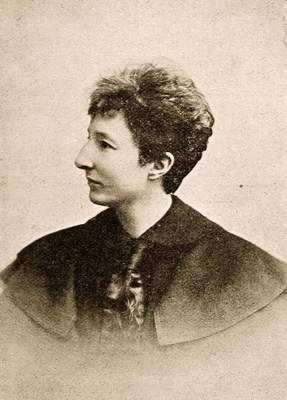Anita Augspurg (1857–1943)
erstellt von
—
last modified
2024-01-04T11:26:49+02:00
Federal German Archive
Federal German Archive
Dr. Anita Augspurg (1857–1943), black-and-white photograph, 1902, photographer: Sophie Goudstikker (1865–1924), Atelier Elvira; source: Wikimedia Commons, http://commons.wikimedia.org/wiki/File:Anita_Augspurg.jpg?uselang=de, gemeinfrei.

